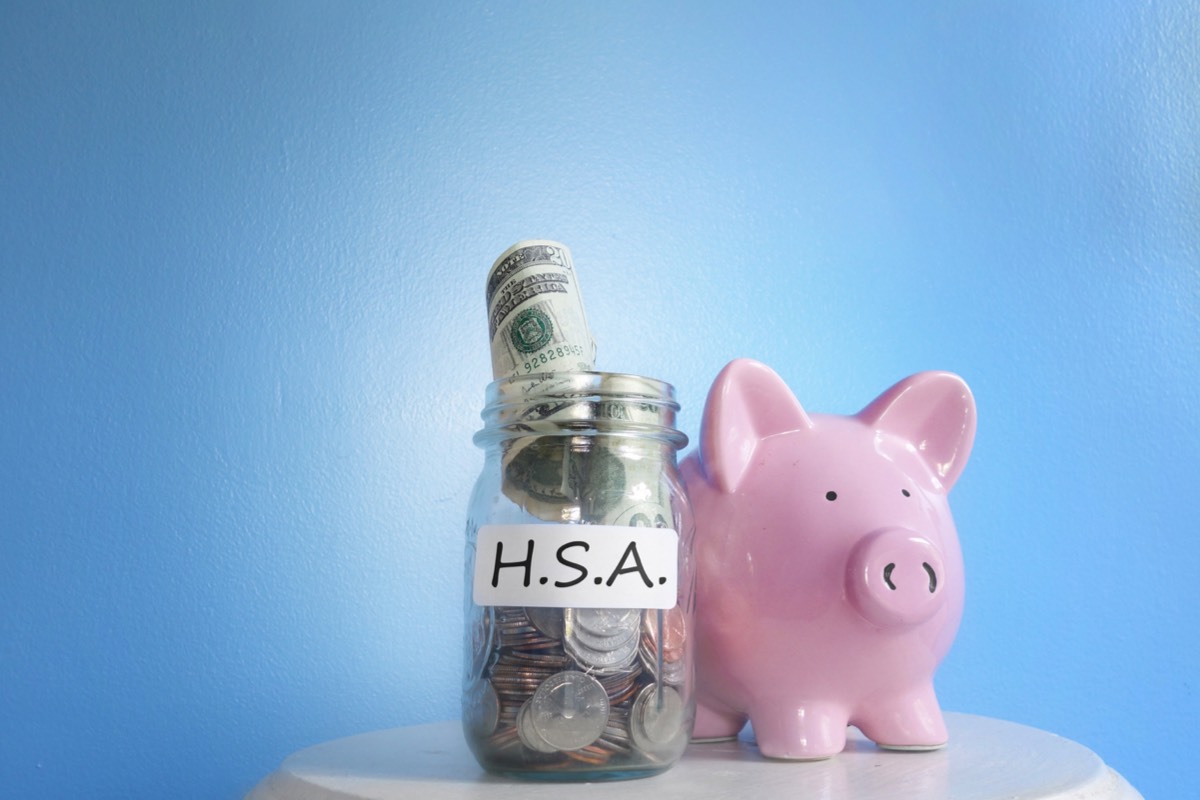What does it mean to “reimburse” yourself with your Health Savings Account (HSA)? It means paying out-of-pocket for an HSA-qualified medical expense and then using money from your HSA to pay yourself back. This can be done even if you don’t have money in the account the day the expense incurred, and at any time in the future. Whether you reimburse yourself now—or later—has some interesting benefits.
Paid for a medical expense out-of-pocket? What’s next?
As long as the qualifying medical expense was made after the establishment of your HSA, you can use your HSA to pay yourself back for your out-of-pocket expense. And while it isn’t required that you submit receipts to be reimbursed from your HSA, we recommend it in case of an IRS audit.
Know what qualifies as an HSA-eligible medical expense
There are thousands of HSA qualified medical expenses. Expenses are likely pretty obvious if you’re at the doctor’s, having an eye exam, or at a dentist appointment. But what about over-the-counter products like sunscreen, prenatal vitamins, or contact lens cleaning solution?
Use “What’s Eligible” to find qualifying medical expenses without the requirement of a doctor’s note, with a prescription, or with a doctor’s letter. Better yet; let Lively’s Expense Scout do the searching for you.
Expense Scout
Instead, use Lively’s Expense Scout to scan and alert you of potential HSA-eligible expenses from linked external accounts. Like your personal debit card or credit cards. Expense Scout prompts you to a list of expenses for review. Then you have the option to reject or submit them—with receipt—for reimbursement, now or later.
Document all medical expenses
To justify spending money on a qualified medical expense, you should keep or track your expense receipts. Receipts should be kept for as long as your tax return is open and subject to an audit; usually three years. Or as long as your HSA is open. Whichever is longer.
Some HSA companies (like Lively) offer digital receipt filing so you can document your receipts without having to save piles of receipts. This is helpful if you plan on paying for out-of-pocket expenses and reimbursing yourself “20 years” from now. But, more on that hack in a bit.
Records to keep in case of an IRS audit
In case of an IRS audit, you need to have records that prove:
- Distributions were to pay or reimburse qualified medical expenses,
- Qualified medical expenses had not been paid or reimbursed from another source, and
- The medical expenses had not been taken as an itemized deduction in any year.
When you choose to be reimbursed for an eligible medical expense that’s called a distribution.
If you take a distribution your HSA provider will send you Form 1099-SA. You should be prepared to file Form 8889 with your annual taxes. If there’s something that doesn’t match between forms 1099-SA and 8889, resolve it before filing your taxes. Keep reading to learn how HSA distributions are taxed and reported.
When can I reimburse myself for an out-of-pocket expense?
You can reimburse yourself anytime.
Today, tomorrow, or 20 years from now. The only rule is that your HSA was established at the time that the expense was incurred (date of service). And that the expense was not reimbursed in any other way.
This is one of the reasons why knowing the exact date of the establishment of your HSA is important. You cannot be reimbursed for expenses that were incurred prior to that date.
Did you know that you can also reimburse yourself for expenses even if you are no longer eligible to contribute to an HSA? That’s because the use of your funds is not tied to HSA eligibility. Once you add money to your HSA, it’s yours. And it can be used at any time in the future.
Want more money in retirement? Reimburse yourself later
Many people choose to pay for medical expenses out-of-pocket and reimburse themselves later. Since there’s no reimbursement deadline, you can choose to reimburse yourself years later. Even during retirement.
This requires you to save your receipts and invoices for reimbursement. In the event that you ever get audited by the IRS, they will ask for proof. If you’re unable to provide those records, you would have to pay regular income tax plus a 20% penalty on your reimbursements.
How HSA distributions are taxed and reported
If you use your HSA to buy a qualified medical expense, you will not have to pay income taxes on those funds. If you use your HSA for something other than a qualified medical expense, that distribution is taxable income. And you can be subject to a 20 percent penalty for early withdrawal. When an HSA account holder reaches the age of 65 or becomes disabled, they are no longer subjected to that 20 percent penalty.
In terms of reporting HSA tax information, the HSA trustee or custodian keeps all reports of distributions. The trustee then shares that information to the account owner through IRS Form 1099-SA. HSA account holders are responsible for reporting their own distributions to the IRS through Tax Form 8889. It’s recommended that HSA owners keep records of all their distributions, in the event, they ever become audited by the IRS.
HSA reimbursement in action
Real-life example: When your HSA is low in funds
A few weeks after opening his account, James gets into an accident and sprains his ankle. Since he doesn’t have those funds in his HSA yet, he pays for his treatment out-of-pocket. He saves his receipts with a digital receipt organizer, so he can reimburse himself later.
Fast forward to a year from then. James now has enough money in his HSA to pay himself back for those out-of-pocket expenses. Because he kept such diligent records, he was able to reimburse himself with his HSA.
He reports this information to the IRS using IRS Tax Form 8889. If James did not report his distribution to the IRS correctly, the money he withdrew could receive a 20% tax penalty. Since James saved his receipts, he won’t have to pay this penalty. And he receives the tax-free benefits from using his HSA for qualified medical expenses.
Real-life example: Your savings strategy
Fast-forward to years from now when Juliet is in retirement. Since she hasn’t withdrawn any of the money in her HSA, she was able to earn more interest with her higher account balance. And even earned more through investing some of her funds.
Juliet has diligently logged years’ worth of glasses, contacts, prescriptions, and other qualified health-related expenses into her account. Which, when added together totals thousands of dollars. She chooses this opportunity to finally reimburse herself for those expenses with her HSA. And uses those funds to help her travel during retirement.
Reimbursing yourself for out-of-pocket medical expenses with Lively
Have a couple of out-of-pocket expenses that you can use your HSA for? Here’s how you can reimburse yourself through the Lively app:
- Access your Lively account through our online portal, iOS, or Android App.
- Navigate to “Transactions” in the menu or click on “+ Expense.”
- Choose “Add Expense: For purchases made using your personal fund.”
- Enter the amount of the medical expense, who the merchant/provider was, and the date you made the purchase or started receiving service.
- Choose “Get Reimbursed Later” or “Process Immediately.”
- Add a receipt by taking a photo or uploading an image.
- Click the “Submit” button.
This process is quick and easy, and you’ll have those funds in your account within 2-3 business days.
We suggest taking a picture of all of the receipts you have for your healthcare expenses so you can keep them attached to your transactions within your Lively account. Having your information ready to go makes using your HSA simple.
Lively, the #1 user-rated HSA provider, currently administers health savings accounts for Alliance Health Plan participants. Their team is dedicated and passionate about simplifying and improving how people save and spend their healthcare funds. They put customers’ needs first, providing exceptional customer support and bringing HSAs into the modern era. Lively’s goal is to make it easy to save on the costs of healthcare today and plan for the costs of tomorrow.






